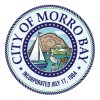Are you applying to the internship?
Job Description
About the Company:
At Page, their promise is design that makes lives better. They offer architecture, engineering, interiors, and consulting services on large, complex projects globally. They value diversity and seek committed team members to deliver on their promise through design.
Job Description:
Page is seeking a Visual Computational Storytelling Intern to join The Page Foundation’s Indigenous Land Acknowledgement Tool (PILAT) initiative. PILAT aims to elevate Indigenous knowledge in contemporary architecture, informing design decisions with site-specific and culturally responsive insights.
This position will work closely with Page’s Research & Innovation Group, which focuses on cutting-edge research and innovation to reimagine the built environment. The Group also partners with The Page Foundation to help advance their organizational goals of driving innovation and prioritizing ethics, equity, and social impact.
Responsibilities:
The intern will help uncover patterns in Indigenous knowledge systems, cultural practices, and material traditions across different regions. The ideal candidate will translate site-specific insights into spatial expressions that evoke the presence and history of Indigenous communities respectfully, offering culturally respectful, contextually grounded, and educationally impactful design cues.
Specific responsibilities include:
• Analyzing Indigenous data for recurring themes, symbols, material systems, and ecological knowledge.
• Exploring strategies for representing these insights through form, texture, or spatial organization.
• Defining design rules or logics that can be translated into parametric scripts (e.g., using Grasshopper or similar).
• Prototyping the storytelling parametric design tool.
• Analyze and interpret Indigenous knowledge and site-specific cultural data gathered via PILAT
• Identify symbolic, material, ecological, or spatial patterns across different Indigenous contexts
• Explore ways to translate these patterns into architectural form, texture, or material language
• Support the development of rule sets that can be translated in scripts and parametric modeling, generative design, and simulation workflows for storytelling purposes
• Document findings and present them in visually compelling, critically aware formats
• Collaborate with designers, researchers, and Indigenous consultants in an iterative process.
Qualifications:
• Actively enrolled in, or recently completed, a graduate program (master or doctorate)—or be an undergraduate with exceptional skills aligned with the requirements—in a related field such as Computer Sciences, Computer Engineering, Engineering, Math or Applied Physics, Architecture, Landscape Architecture, Urban Design, Design & Applied Arts, Sociology, Art History, Graphic Design, Industrial Design, Museum Studies, Product Design/Packaging, Digital Communication, City/Urban/Regional Planning, Geography, Game Development, Design Computing, Data Visualization, Indigenous Studies, Computational Design, Digital Fabrication, Anthropology, Cultural Geography, with an interest in Sociology, Anthropology and Computational Design.
• Sharp computational skills and a strong interest in cultural storytelling, computational design, and architectural materiality.
• Rule Definition & Parametric Design: Proven ability to translate raw data into explicit design rules—mapping patterns to forms, materials, textures, and spatial logics—and implement those rules in Grasshopper (or equivalent) and scripting (Python, C#, etc.).
• Visual & Textual Research: Strong research and analytical skills for uncovering themes, symbols, and ecological insights within Indigenous knowledge systems.
• Cultural Sensitivity & Ethics: Deep respect for Indigenous perspectives; skill in crafting non-appropriative, site-responsive narratives that honor cultural contexts.
• Communication & Storytelling: Excellent written, verbal, and visual storytelling—able to document methodologies, present findings, and articulate design narratives with clarity and nuance.
• Background in bioregional materials or sustainable design principles is preferred.
• Prior community engagement or cultural storytelling projects preferred.
• Minimum 20 hours per week, up to 6 months in duration.




